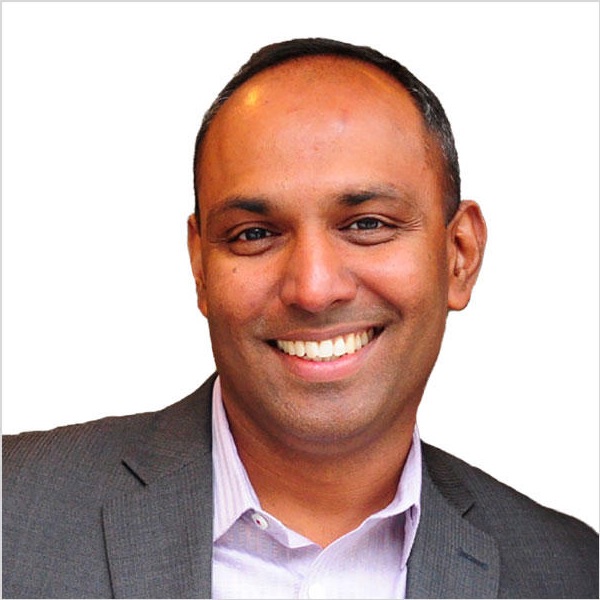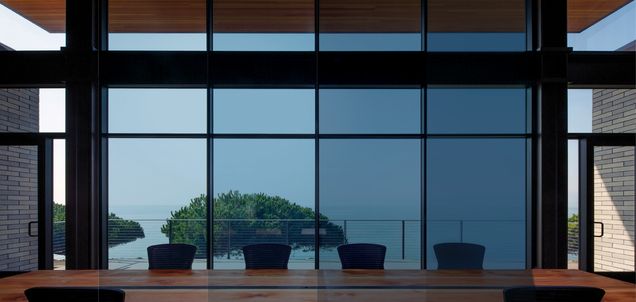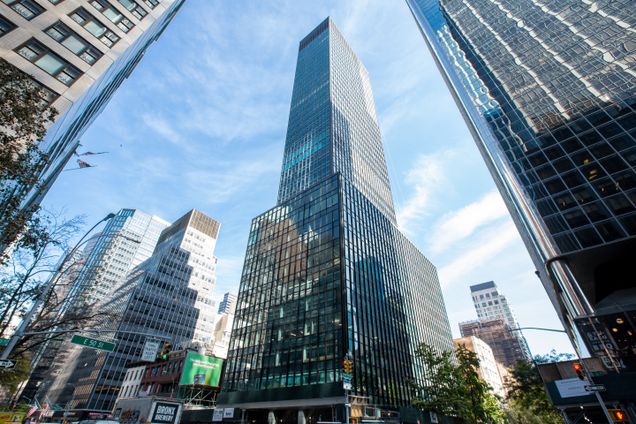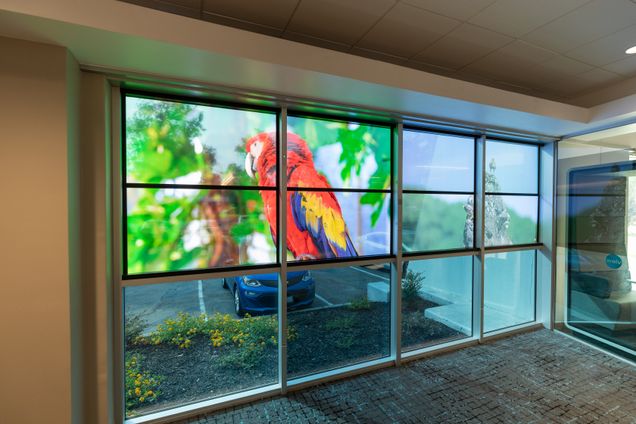Clearly Seeing a Green Future
Helping buildings reach net zero, a high-tech smart windows company led by Rao Mulpuri (’92, ’96) just went public
By Patrick L. Kennedy
We couldn’t live without the sun, but we don’t like it shining directly into our eyes. That’s why the Venetians invented blinds, and for centuries that had to be good enough.
But in this, the 21st century, the technology exists to make windows themselves solve the glare problem—without blinds, drapes, or any other clutter blocking sunlight and collecting dust.

And it’s an ENG alum, Rao Mulpuri (MS ’92, PhD ’96), who is leading that charge, as CEO of View, the nation’s largest maker of just such high-tech smart windows. The company went public this month, inviting investors to help grow a 12-year-old business whose product—windows that automatically tint in response to the sun’s movement—is already reducing glare and lowering energy costs in more than 500 office towers, apartment buildings, hospitals, and airports.
“It’s very much an engineered product,” says Mulpuri, “but it doesn’t begin and end with the devices. It starts with a deep understanding of the human body.”
In today’s sleek office and condo buildings, big windows let in lots of sunlight, which we need for our mental and physical health. But, on their own, those windows act as giant magnifying glasses, baking the occupants. That leads not only to visual and thermal discomfort, but also to a heavy reliance on air conditioning, and use of blinds and shades that block the view and natural light.
View’s electrochromic windows use nanotechnology and artificial intelligence to adjust the tint to meet the sun’s glare as it travels across the glass. The windows are coated with layers of high-tech thin film about one-hundredth the thickness of a human hair.
“The technology is incredibly complex,” says Professor Soumendra Basu (ME, MSE), who has done some consulting work for View. “It’s a challenging materials problem. Essentially, you’re electrochemically driving ions back and forth—when you drive them in one direction, it gets tinted; when you drive them back in the opposite direction, it becomes transparent again.” The shading level can be programmed in advance, or it can be adjusted any time with a smartphone app.

As a result, inhabitants keep the practical and psychological benefits of daylight, while lowering energy costs—and environmental impact—by up to 20 percent.
“We’re finding ways to advance the quality of life while reducing energy consumption,” says Mulpuri. “And that leads to better outcomes for business. That’s the powerful combination we deliver—better for people, better for the planet, and better for profits.”
And View hopes to increase those energy savings as it continues to hone its product. Adding to the over $1 billion the company has already raised from investors, Mulpuri says the IPO will help View add manufacturing capacity and invest in research and development.
Even as a grad student learning how to deposit complex coatings, Mulpuri “saw the big picture,” recalls Basu, who worked closely with Mulpuri on his thesis. “He asked the important questions relating to the big picture. ‘OK, so I can grow these coatings, but then what? Is it commercially viable? Can this knowledge be translated to other applications?’”
For his part, Mulpuri remembers, “I learned how to manipulate atoms and molecules and use chemical vapor deposition to do some original work, but what BU really taught me was learning how to learn. That means you look at a new problem in any field and start to ask basic questions, to break things down into first principles, and start to make connections in unlikely ways.”
Thus Mulpuri’s insistence on learning about human evolution, circadian rhythm, and the muscles around the eyes in order to make a better window. “Who says an engineer shouldn’t be curious? Shouldn’t go learn about biology? It makes you a better engineer. It’s when people silo themselves that they miss those opportunities.”
After earning his Ph.D. and working in the semiconductor industry driving Moore’s Law for a dozen years, Mulpuri was inspired to develop technology to combat the effects of climate change, and joined an early-stage start-up. He renamed it View, moved it to a new location in Silicon Valley and began developing the window technology from scratch. “It was daunting,” Mulpuri recalls, and success was far from assured.

Today, View has 500 employees and 1,000 patent filings. Its smart windows are designed into 75 million square feet of buildings across the country, from Netflix’s headquarters in Silicon Valley to an upcoming Google building in Manhattan. In Boston, View windows are at the Logan airport, and were recently installed in a new apartment building just across the Mass Pike from ENG.

In the latest iteration of View’s technology, the window can even turn into a computer screen, enabling users to hold a videoconference or create their own scenery. Dallas Fort Worth International Airport is among the first to install the transparent screens at their ‘Gate of the Future’ expansion.
Still, Mulpuri carves out time to be an active alumnus and member of Dean Kenneth Lutchen’s Engineering Leadership Advisory Board.
“I’m very excited about what Ken is doing, and BU and the College of Engineering’s progress,” Mulpuri says. “It’s an upward spiral, and part of that is this idea of interdisciplinary engineering fields and thinking about ways to create value in the world.”
Mulpuri hopes current students and more recent alumni will draw some lessons from his story of tackling risks and connecting the dots across disciplines. “I’m at a stage of my life where I want to give back,” he says. “I want to inspire young engineers to want to work on solving difficult problems.”
